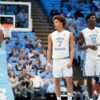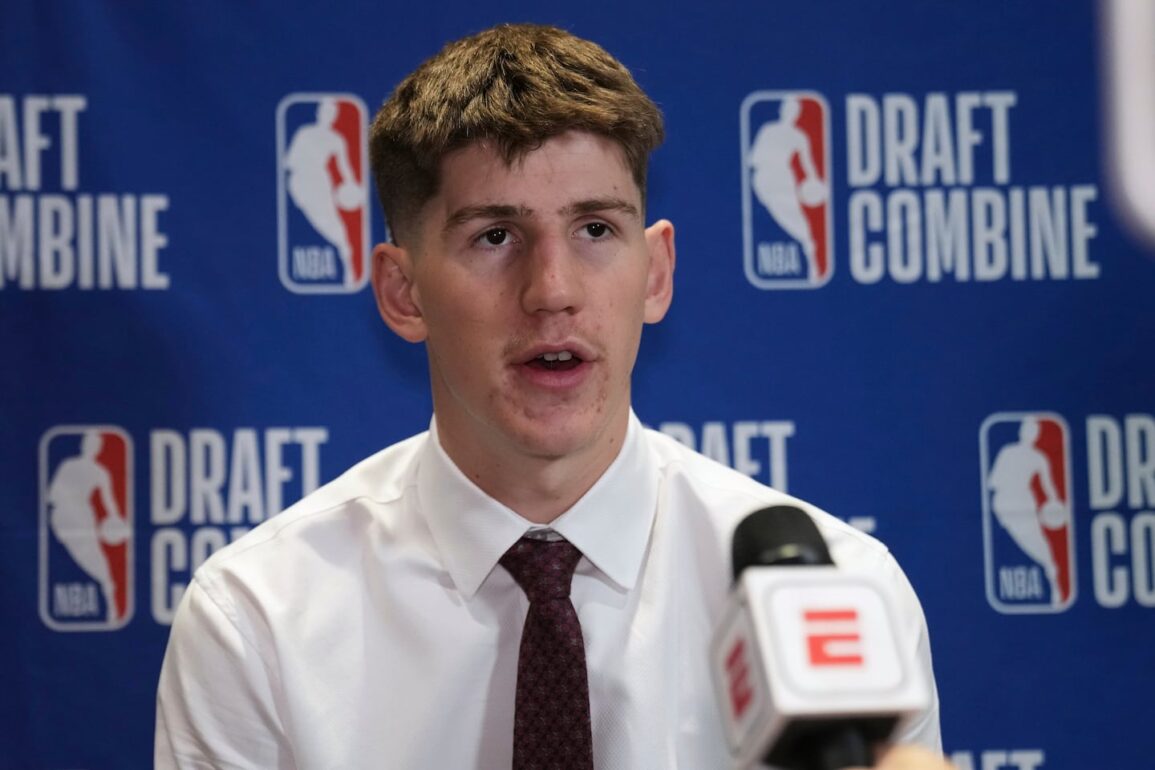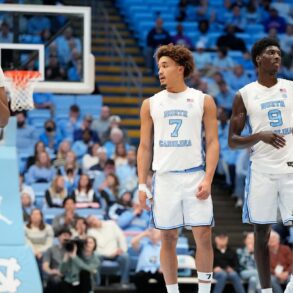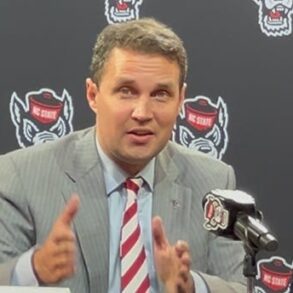Vanished is the thin veneer of amateurism, laughably transparent, that hung gossamer-like over major college basketball. Name, Image, and Likeness has served up the naked truth, stripping any pretense of it being anything other than a pay-for-play enterprise. A free-of-charge minor league feeder for the NBA.
In tandem with “transfer portal,” NIL — those three letters — causes the blood of some basketball traditionalists to boil, but there is an upside to the era that makes it pay off for more than just the players.
An unforeseen benefit of all those bucks could be a more game-ready NBA rookie workforce and a higher caliber of college basketball.
The pleasant side effect of the mad dash for cash is ameliorating the pro basketball development pipeline, one long prone to premature harvesting and eating its young. Instead of fleeing for an uncertain NBA future, talented college players possess the option to run it back on campus, where they can get paid, improve their craft, and show up at the NBA’s doorstep more prepared.
It’s a win, win, win scenario.
The top of NBA drafts are still likely to be littered with one-and-done players like sure-shot No. 1 pick Cooper Flagg of Duke, the pride of Maine. But for players on the first-round fence or the outskirts of lottery land, there’s a choice. That played out last Wednesday, the deadline for players to opt out of the draft and maintain college eligibility.
There were 106 early-entry candidates (including international players) for the 2025 draft, to be held June 25-26. That was the lowest in a decade (2015 had 91) and down from 195 last year.
According to the NBA, 50 players — all but two of whom played college basketball last season — withdrew by the May 28 deadline. (The NBA’s deadline to withdraw as draft eligible is June 15.)
That potential sea change might not be great for the Celtics, who possess picks No. 28 (first round) and 32 (second), but it’s good for a basketball ecosystem ravaged by the vicious cycle of ill-prepared, inchoate, and immature players flooding the draft pool each year and leaving holes in college basketball rosters.
“This year’s draft class more than any ever has been affected by the NIL and affected by the new pay-for-play,” Celtics president of basketball operations Brad Stevens told NBC Sports Boston, “but I think that this draft more than any other will probably be affected by that, as far as the backend of the draft and even into the late first [round] people will have really hard decisions to make.
“Do I come to the NBA and make this much money, slotted for this many years? Or do I take a huge payday from some school? And that’s the world we live in.”
It’s a world where college players don’t have to choose between getting compensated for playing or prioritizing improvement.
Assuming the settlement in the landmark House vs. NCAA case is approved, power conference schools will be able to (officially) pay athletes, with each allotted approximately $20.5 million. The bulk of that will go to football and basketball.
Coupled with the transfer portal, college players enjoy unfettered free agency thanks to NIL. The NCAA and its president, former Massachusetts governor Charlie Baker, detest that depiction of the system, but that’s effectively what it is — a free market.
Instead of being assigned to an NBA locale and slotted into a rookie contract, players can spark an NIL bidding war and choose their destination. Call it college basketball capitalism.
Rookie salaries prescribed by the NBA collective bargaining agreement get lower with each pick. Flagg will earn about $11.5 million in his rookie season, but the 17th pick is set to make $3.5 million — a number sought-after college players can approach in the NIL market.
Every pick after the 20th selection is projected to make less than $3 million as a rookie, and only the first two years of rookie salaries are guaranteed for first-round picks. That’s why some prominent prospects extended their school days.
Among the high-profile college basketball returnees:
⋅ Alex Condon, the fourth-leading scorer for national champion Florida.
⋅ Associated Press second-team All-American PJ Haggerty, who transferred to Kansas State.
⋅ Houston point guard Milos Uzan, who helped the Cougars reach the national title game.
⋅ Highly recruited class of 2024 guard Boogie Fland, who transferred to Florida.
⋅ Auburn freshman sensation Tahaad Pettiford.
⋅ All-Big 12 first-team forward Darrion Williams, who transferred from Texas Tech to North Carolina State.
⋅ University of Kentucky leading scorer Otega Oweh.
⋅ Labaron Philon, an SEC All-Freshman team selection.
⋅ All-Big Ten center Nate Bittle of Oregon.

You don’t have to be Dick Vitale to know those names if you’re passionate about college hoops.
The apotheosis of this NIL-fueled trend is Michigan big man Yaxel Lendeborg. One of the most sought-after transfers in the country, Lendeborg landed in Ann Arbor from the University of Alabama at Birmingham. A versatile forward, Lendeborg piqued the interest of NBA teams, drawing first-round buzz.
Last season, he joined Larry Bird (heard of him?) as the only Division 1 college players ever to compile 600 points, 400 rebounds, and 150 assists in a season.
When Lendeborg pulled out of the draft, he offered a statement thanking Michigan coach Dusty May for his patience with the process and “the Champions Circle collective for making this opportunity possible.”
That’s the NIL collective bankrolling University of Michigan athletes. Michigan’s NIL money was the siren song luring Lendeborg back to school.
Some will find that unsavory, but this is the new reality. The presence of Lendeborg and his brethren in the college game represent a rising tide that should lift all basketball boats.
That’s the silver lining of the NIL golden goose.
Christopher L. Gasper is a Globe columnist. He can be reached at christopher.gasper@globe.com. Follow him @cgasper and on Instagram @cgaspersports.
This post was originally published on this site be sure to check out more of their content.








